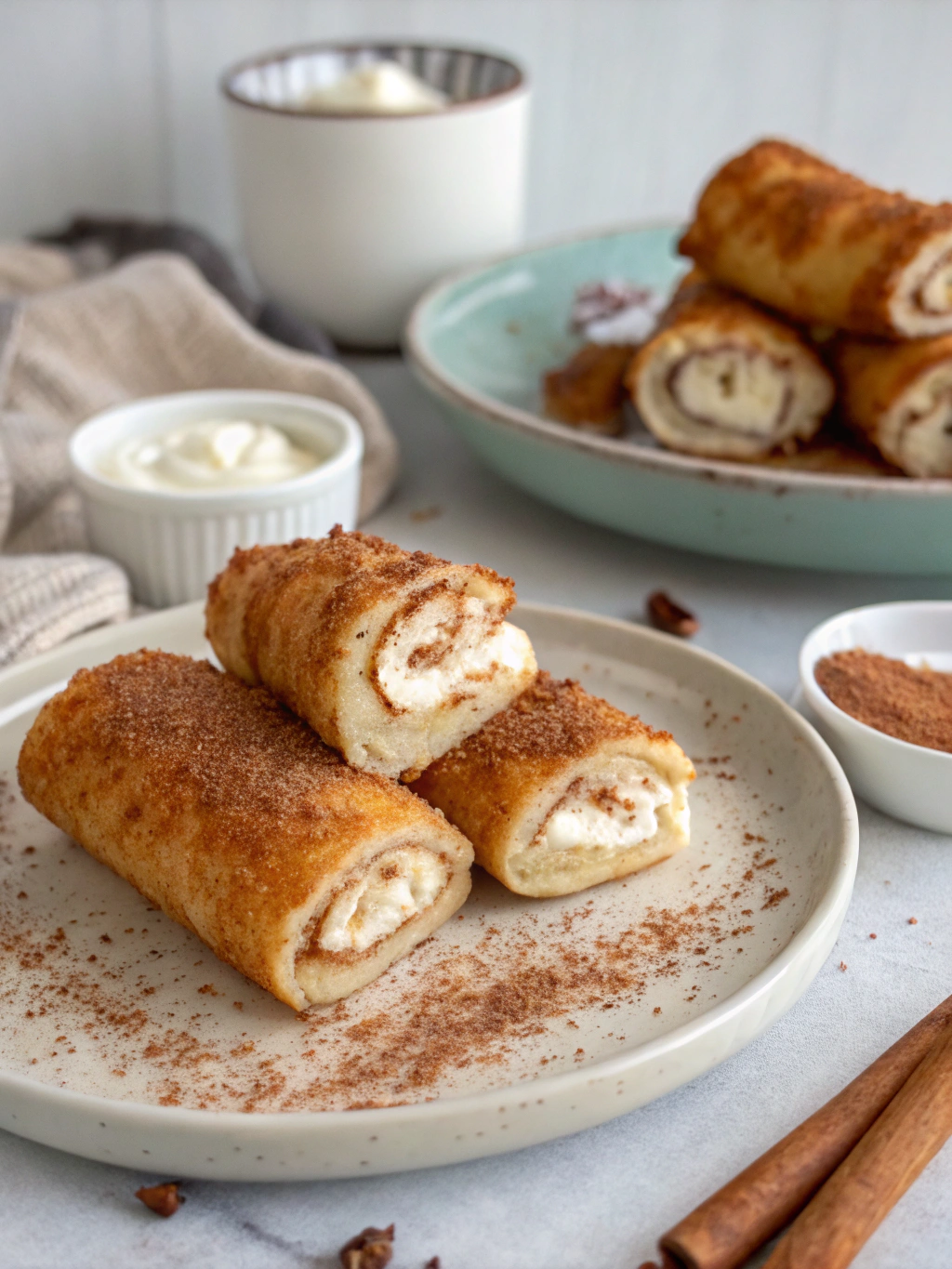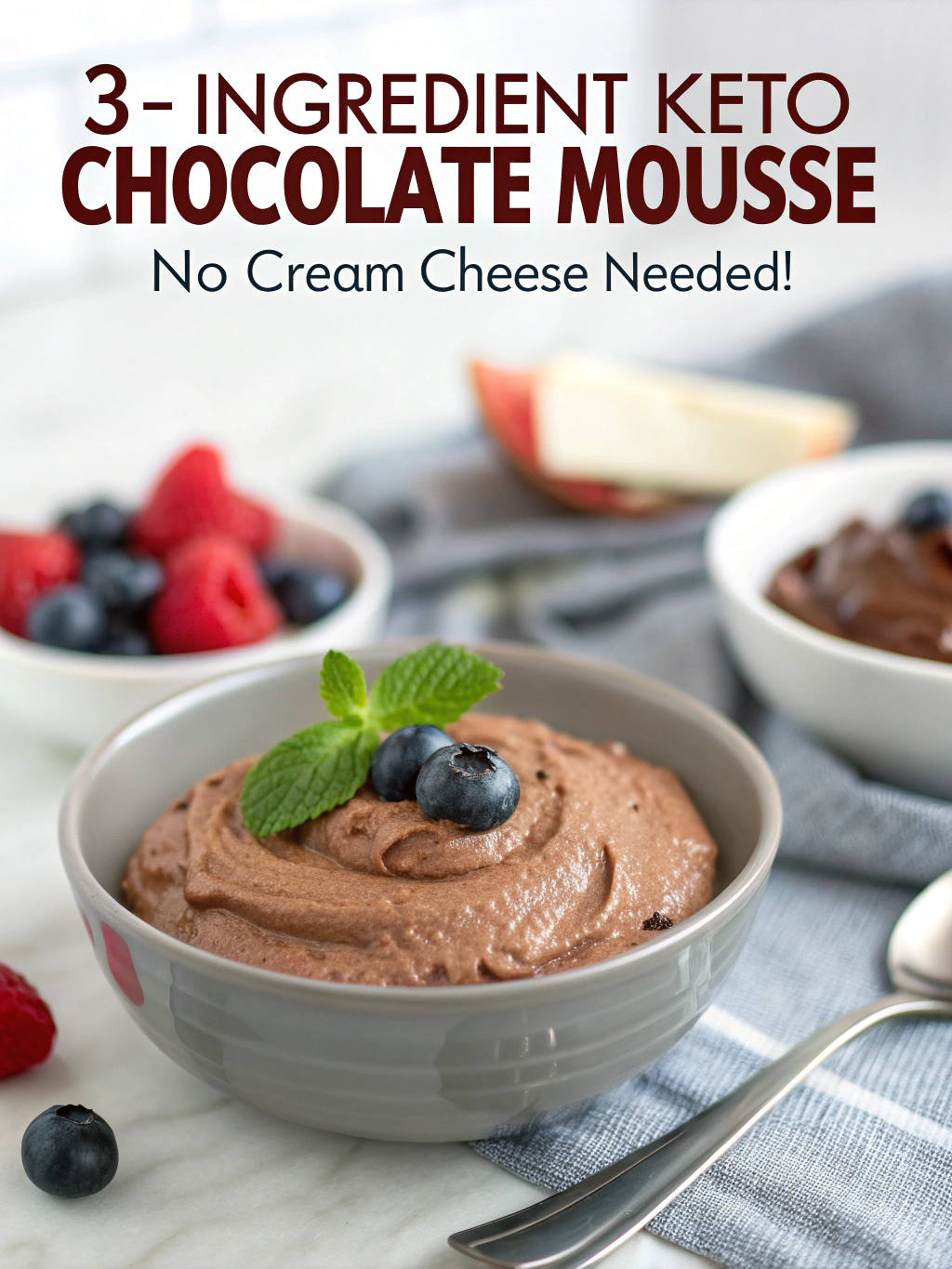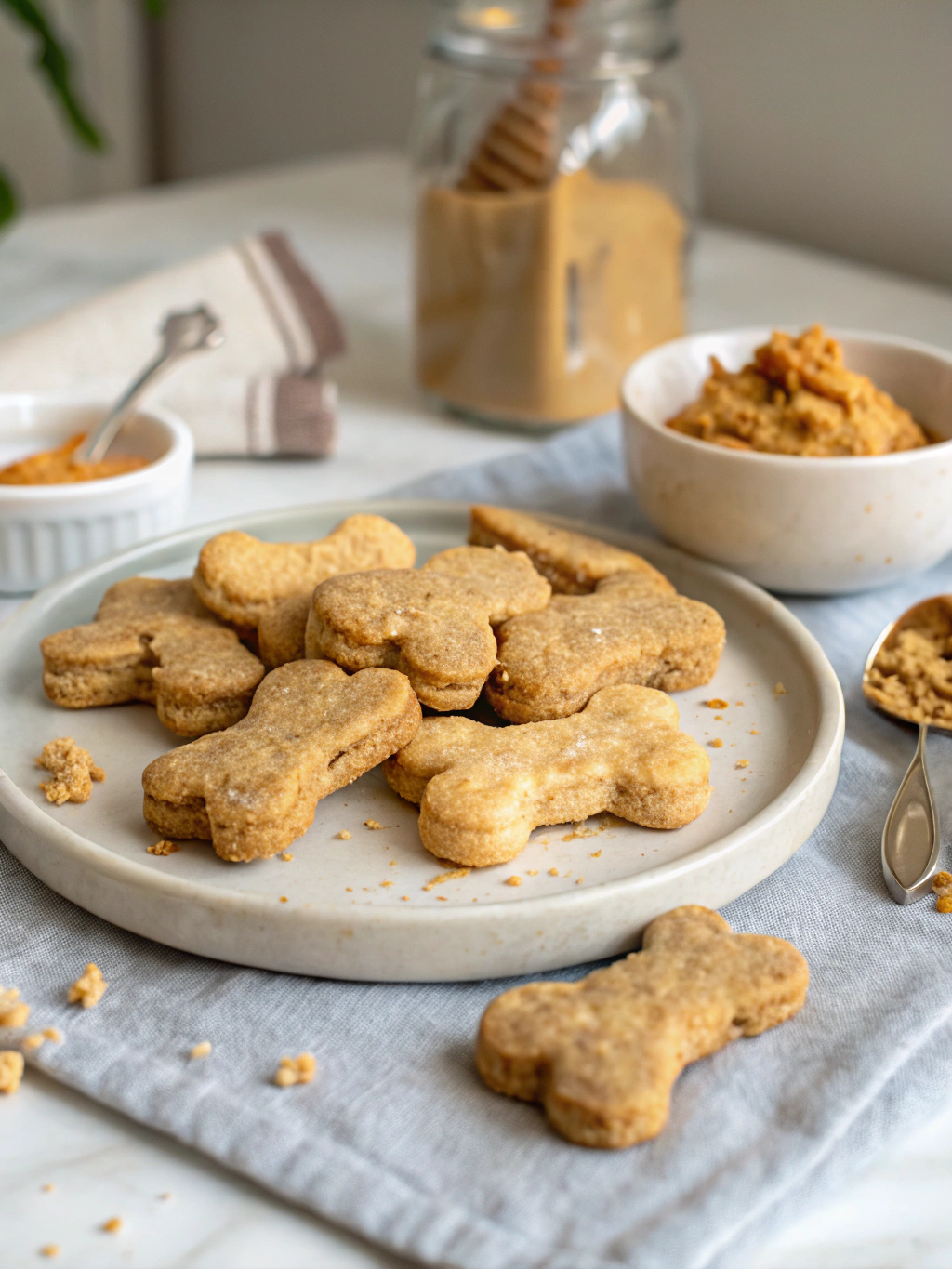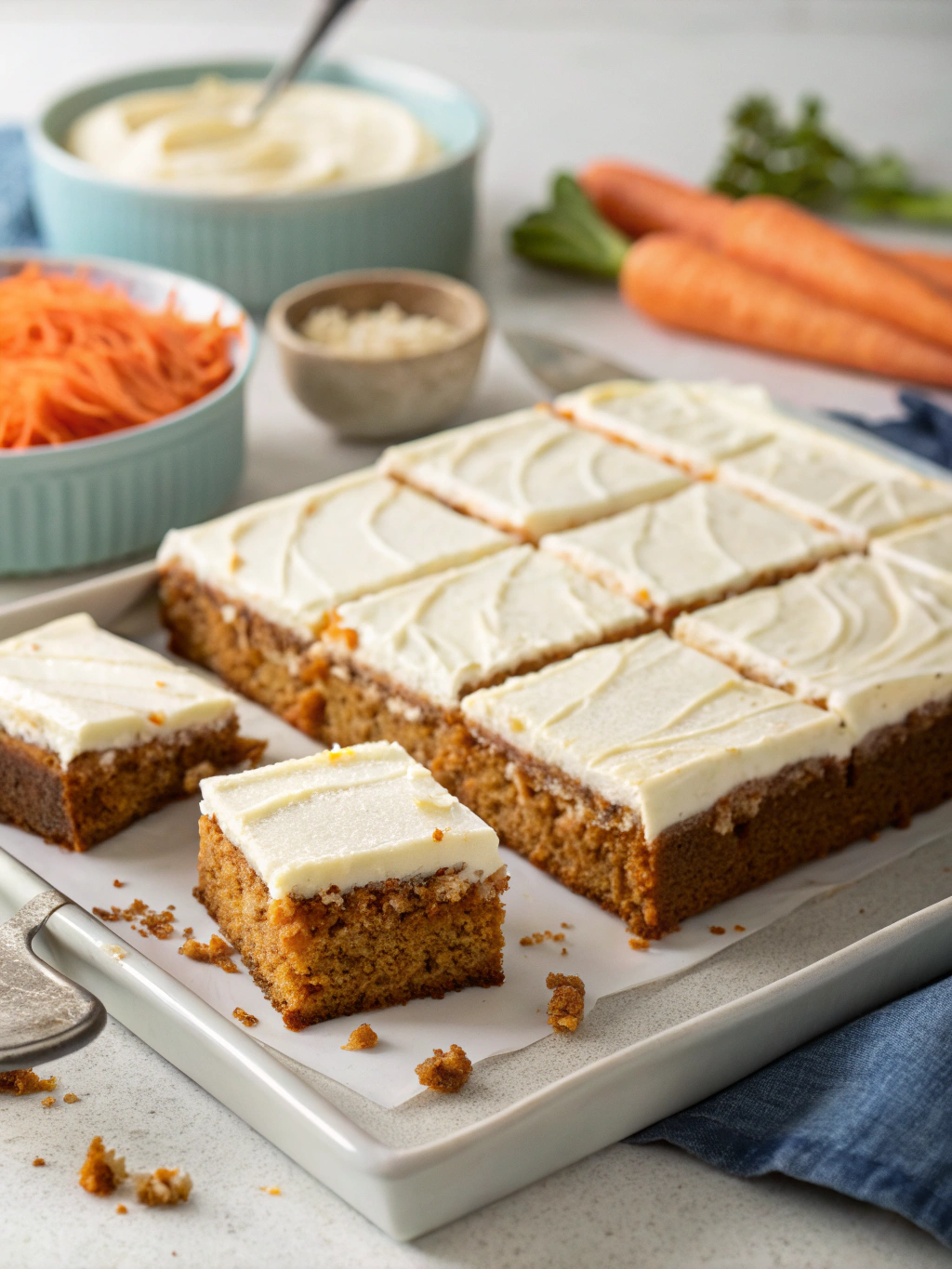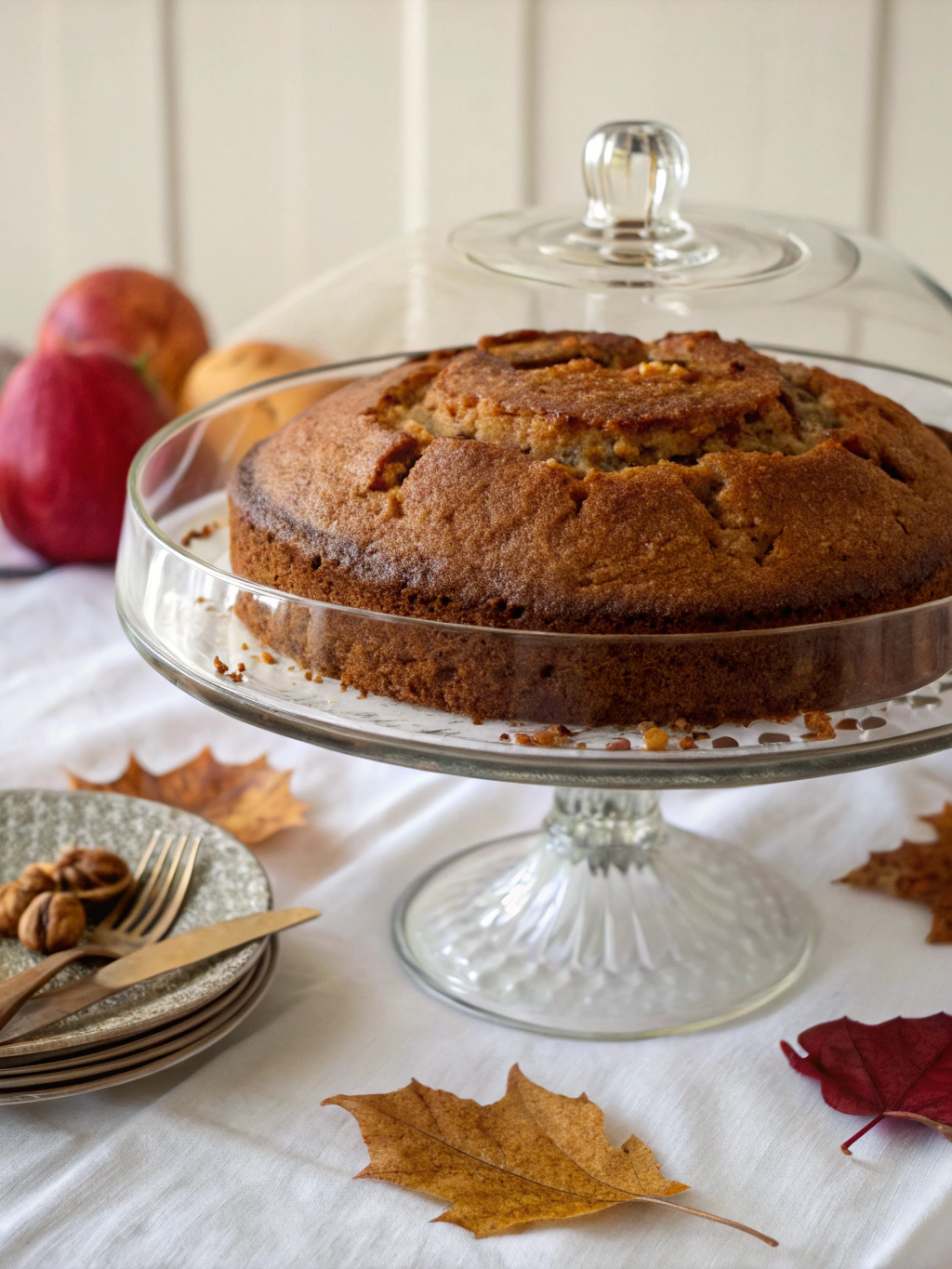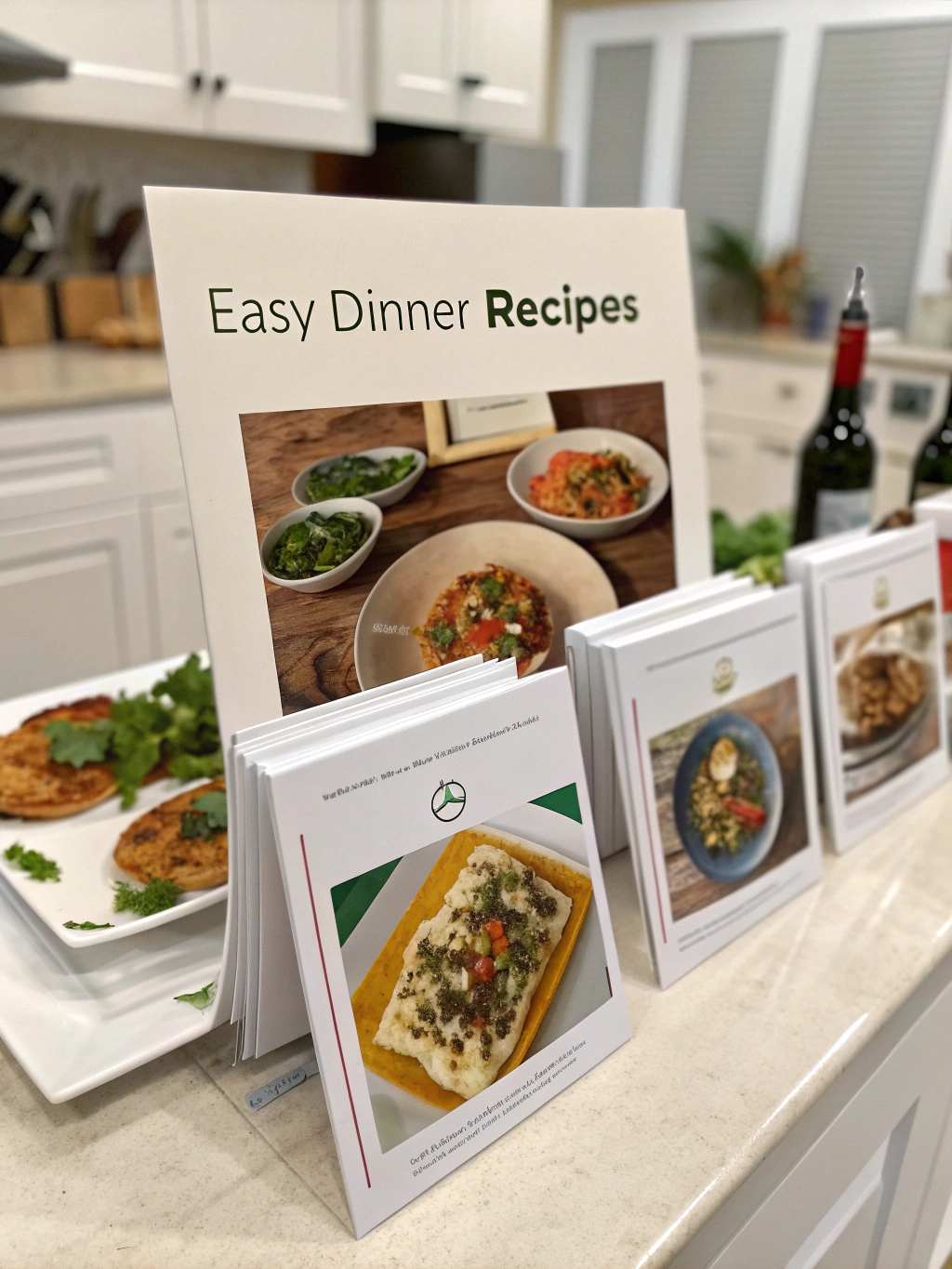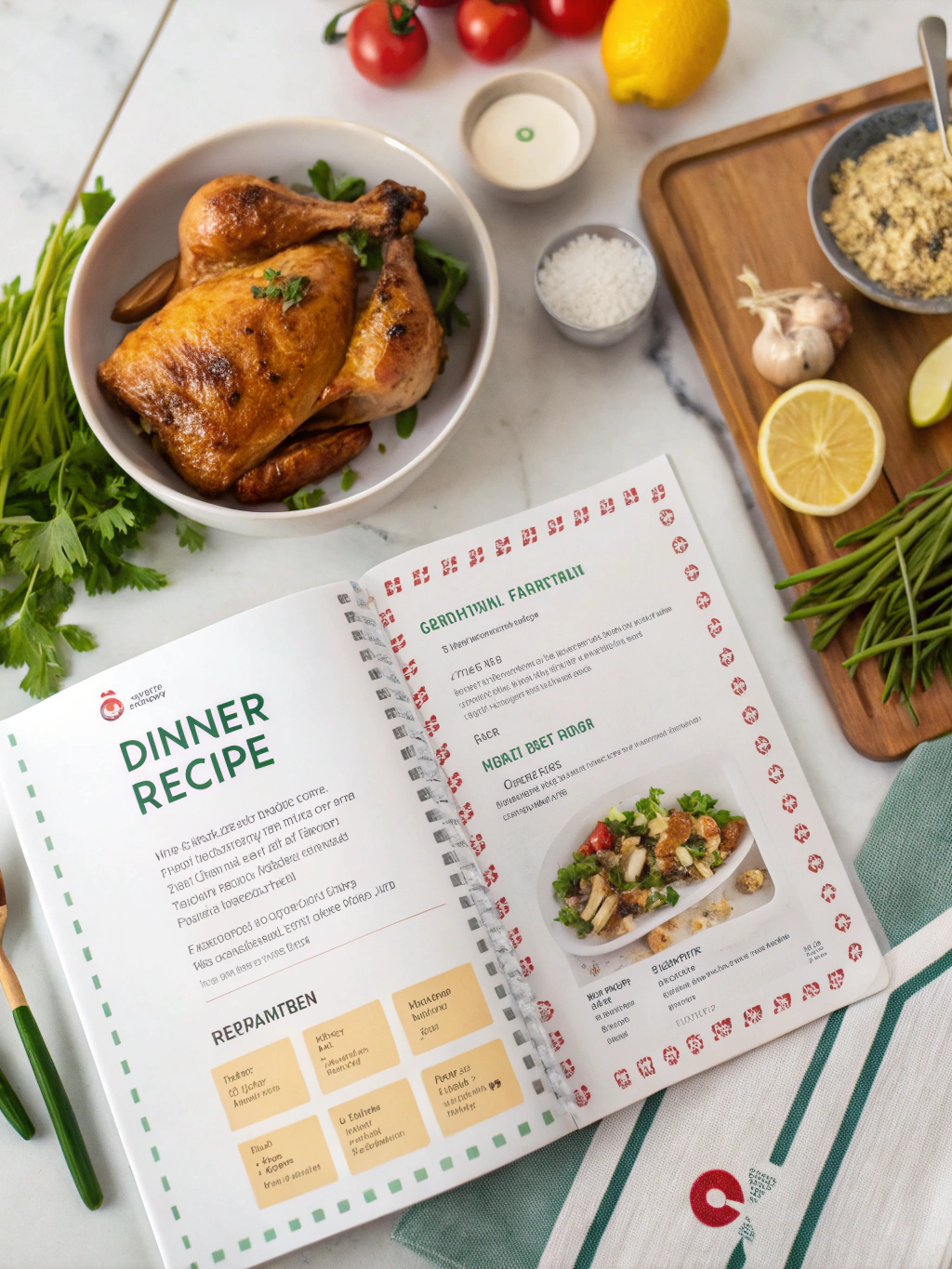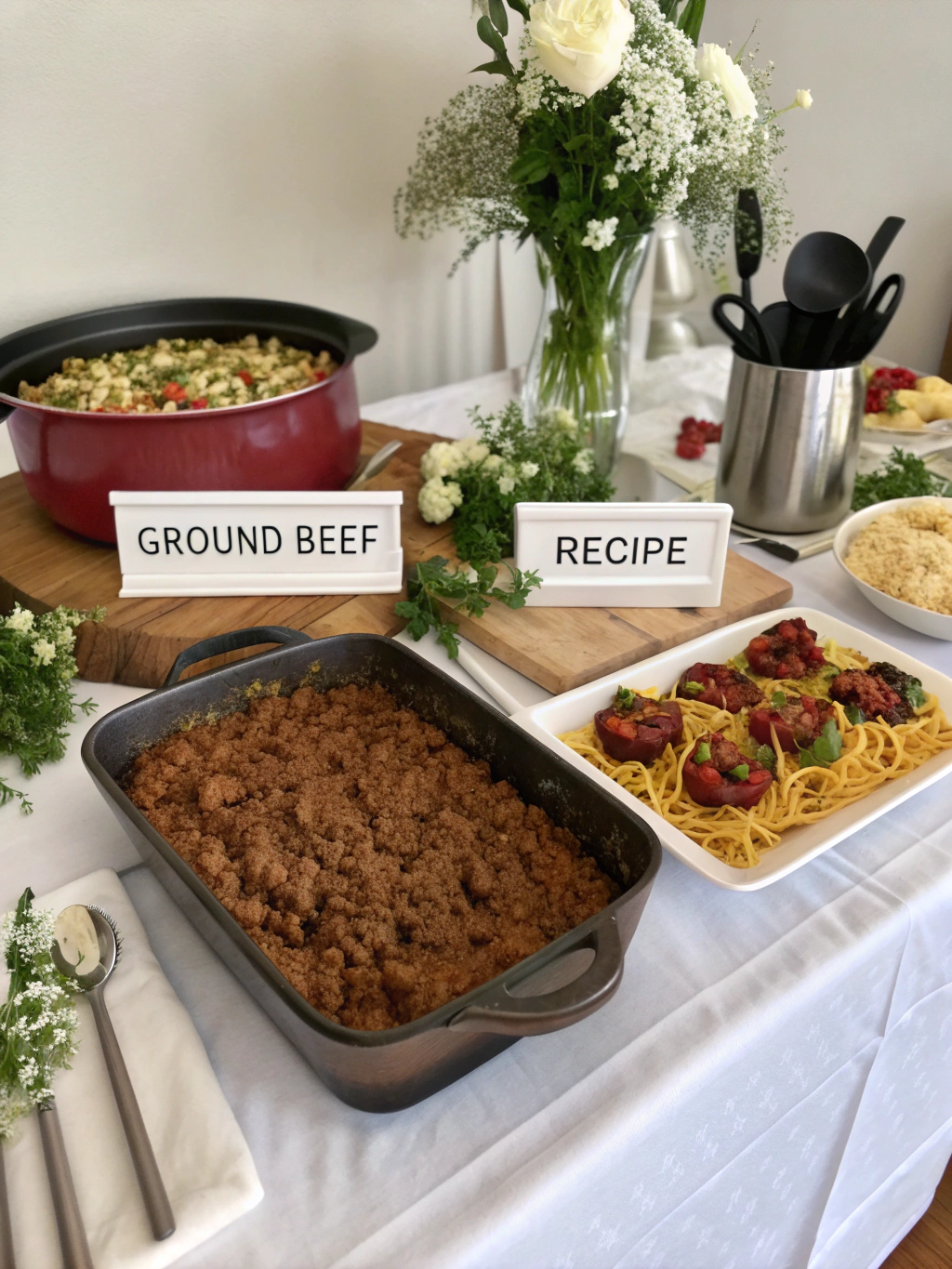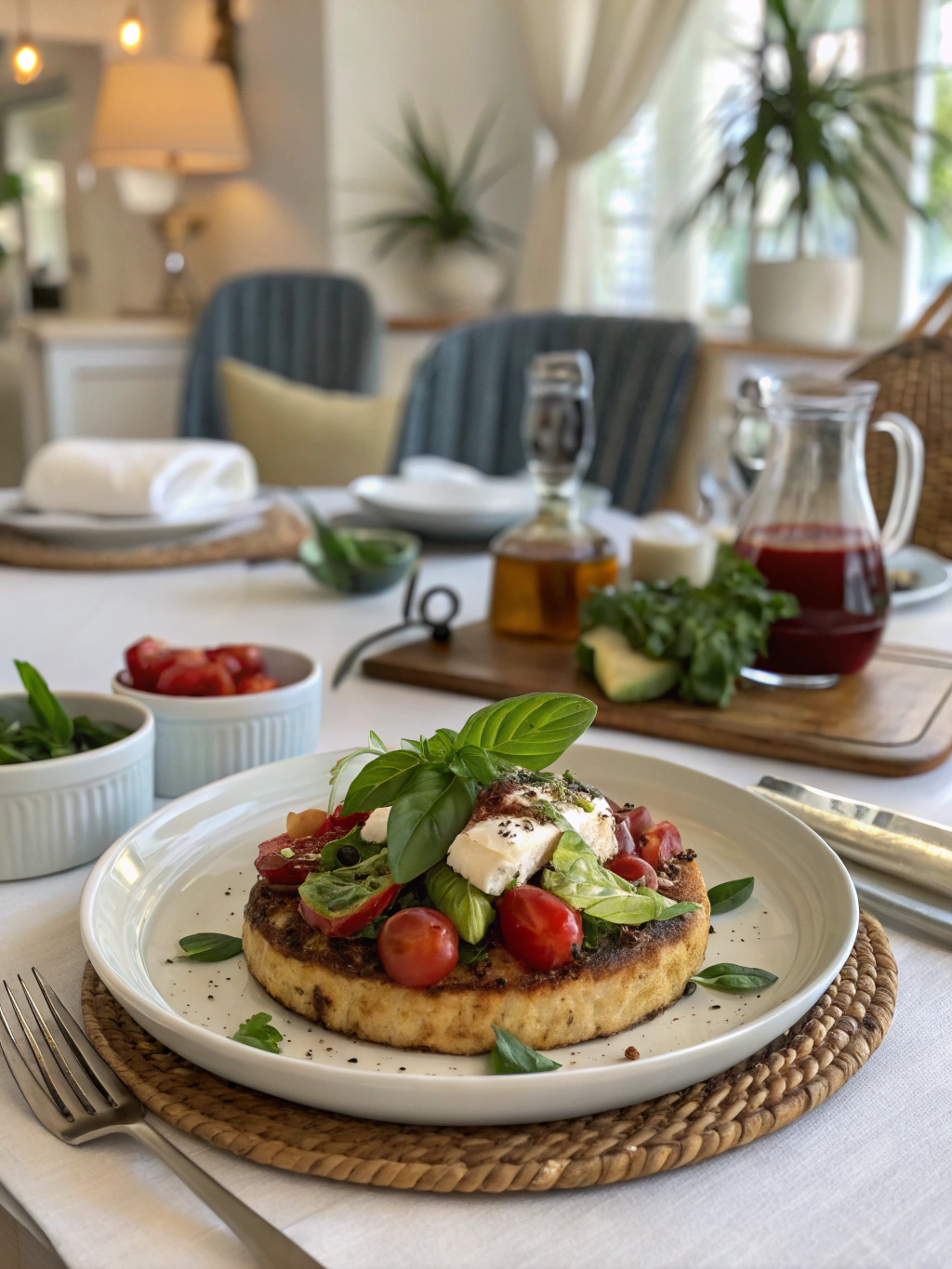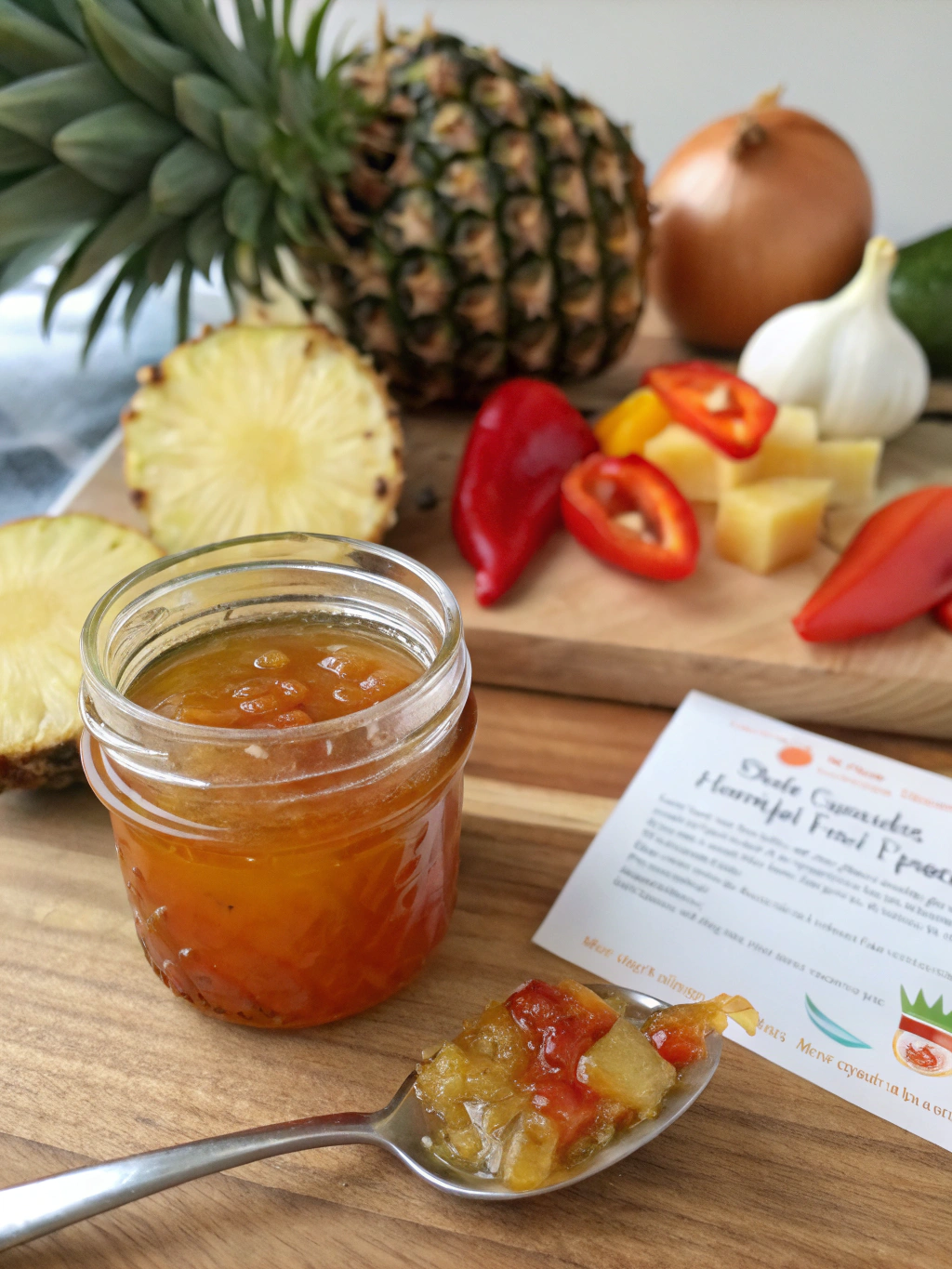
Tongue-Zapping Spicy Pineapple Habanero Pepper Jelly: Easy Homemade Recipe
Ever wonder why some food memories stick with you like molasses to a wooden spoon? I was knee-deep in pineapple peels last Tuesday when it hit me—the perfect balance of sweet tropical fruit with that habanero head-kick could make a jelly that’d wake up even the deadest taste buds. My kitchen adventures with spicy pineapple habanero pepper jelly began after a disasterous attempt at making my grandmother’s pepper jam ended with what I now call a “sauce tragedy” (when your intended preserve becomes a syrup instead). Though I’ve only been canning for ’bout six years—or maybe it’s eight, depending on whether you count those failed batches of strawberry preserves—this recipe has become my absolute go-to for impressive hostess gifts.
The Birth of My Pepper Obsession (Or How I Learned to Stop Worrying and Love the Burn)
So there I was, fingers stained yellow from turmeric (completly unrelated to this recipe) when my neighbor Tom handed me three habaneros from his garden and said, “These’ll either kill ya or cure ya.” That offhand comment spawned what would become a two-year pepper jelly experimentation phase that nearly drove my husband to madness. I initially tried combining jalapeños with mango—a terrible mistake that resulted in what we now refer to as “The Great Counter Explosion of 2021.”
Turns out, overcooking pectin while distracted by a true crime podcast creates a volcanic reaction. Who knew?
The Spicy Pineapple Habanero Pepper Jelly concept came to me during a particularly humid August in Cincinnati, when the thought of turning on the stove seemed criminal. Yet something about the pile of pineapples on sale at Kroger’s whispered “combine me with something fiery.” I’ve tweaked this recipe seventeen times since then—sometimes adding more vinegar, sometimes less, occasionally throwing in bizarre additions like a splash of coconut extract (don’t do this unless you’re prepared for what I call “tropical confusion”).
What You’ll Need (aka Ingredient Gathering Treasure Hunt)
- 2 cups fresh pineapple, diced into teensy chunks (frozen works if you’re desperate, but the flavor develops a weird back-note that reminds me of wet cardboard)
- 3-5 habanero peppers, seeded and minced (wear gloves unless you enjoy the sensation of your fingertips being on LITERAL FIRE for hours)
- ONE large red bell pepper, diced (for color and because it helps mellow the habanero’s rage)
- 3.5 cups white sugar (yes, it SEEMS excessive, but trust me—the spicy pineapple habanero pepper jelly needs this sweetness backbone)
- ¾ cup apple cider vinegar (the cloudy kind with “the mother” if you’re fancy, though regular works fine too)
- 2 Tbsp lemon juice (freshly squeezed only—that bottled stuff is an abomination)
- 1 packet (1.75 ounces) powdered pectin (or 6 tablespoons of bulk pectin if you’re one of those people who buys in quantity)
- A hefty pinch of salt (approximately what fits between your thumb and first two fingers when slightly cupped)
- Optional: ½ teaspoon butter to reduce foaming (what I call “bubble taming”)
The Making of the Magic (Instructions That May Save Your Kitchen Ceiling)
STEP THE FIRST: Prepare your canning equipment. Sterilize 5-6 half-pint jars in boiling water or dishwasher. Keep ’em hot! Nothing ruins spicy pineapple habanero pepper jelly faster than cold glass meeting hot preserves—unless you enjoy the sound of shattering and subsequent sobbing.
STEP B: Combine the pineapple, both peppers, and vinegar in a large, DEEP pot. I cannot stress the DEEP part enough after my own “Great Kitchen Ceiling Staining Incident.” The mixture should only fill the pot one-third full to allow for violent bubbling (what I’ve named “lava expansion”).
STEP THREE-ISH: Bring that mixture to a rolling boil over medium-high heat. Now—wait, turn that heat down a smidge. Medium heat. The boil should be enthusiastic but not apocalyptic.
4️⃣: Stir in the sugar all at once (I know this seems wrong, but do it anyway). Add the lemon juice and salt. Return to a full boil while stirring constantly with a wooden spoon—actually, make that a silicone spatula, it scrapes the bottom better and prevents the scorching that ruined my first three batches.
STEP ★: Once boiling hard enough that stirring doesn’t slow it down (what my Aunt Phyllis calls “unstoppable bubble momentum”), add the pectin while performing the “sprinkle and stir dance”—gradually adding while continuously stirring. Maintain this furious boil for exactly 1 minute and 45 seconds—not the standard 1 minute most recipes call for. I discovered this precise timing after making 14 batches with varying set qualities.
STEP LAST-ISH: Remove from heat and skim off any foam with a metal spoon. Then perform the “quick rest”—letting the jelly sit undisturbed for exactly 3 minutes to allow the pepper bits to distribute more evenly instead of floating to the top.
FINAL STEP: Ladle the hot spicy pineapple habanero pepper jelly into prepared jars, leaving ¼-inch headspace. Wipe rims clean with a dampened paper towel (vinegar-dampened is even better for ensuring a proper seal). Apply lids and bands, and process in a boiling water bath for 10 minutes (add extra time for elevation if you’re somewhere mountainous).
Jelly Wisdom & Warnings (Learn From My Pain)
• The Pepper Seeding Debate: Some recipes suggest leaving seeds in for extra heat. I tried this once and created what my brother-in-law called “edible napalm.” Remove seeds unless you enjoy watching your dinner guests cry.
• The Float Test: After cooking but before canning, drop a small spoonful onto a frozen plate. If it wrinkles when pushed with your finger after 30 seconds, it’ll set properly. If not, you’ve created what I call “pancake syrup with attitude.”
• Never, NEVER taste-test immediately after cooking unless you enjoy the sensation of taste bud immolation. This isn’t your average raspberry jam, people.
• Strategic Cooling: Allow upright jars to cool undisturbed for 24 hours. I once moved them after 6 hours and ended up with what I now teach as “the semi-set disaster scenario” in my unconventional home canning workshops.
• Expect Color Shifting: The bright initial color will mellow and deepen over 2-3 weeks. What I call “the resting transformation” is totally normal—your jelly isn’t dying.
Essential Equipment (The Holy Trinity of Jelly-Making)
THE GAME-CHANGING WIDE-MOUTH FUNNEL ★★★★★
I dropped mine in 2019 and repaired it with food-safe epoxy rather than replace it.
Using a regular funnel means wearing at least 30% of your jelly instead of jarring it.
Amazon: https://www.amazon.com/dp/B00004UE7R
6-QUART CHAOS CAULDRON (dutch oven) ★★★★★
Mine has burn marks that tell the story of every preservation mistake I’ve ever made.
Should be heavy-bottomed or you’ll experience what I call “hot spot betrayal.”
Amazon: https://www.amazon.com/dp/B000N501BK
JAR LIFTER WITH GRIP CONFIDENCE ★★★★★
The off-brand one I used in 2018 dropped a jar and I still have a scar shaped like Florida.
The rubber coating should extend the ENTIRE length of the gripping surface, not just the tips.
Amazon: https://www.amazon.com/dp/B071L7PH3D
But What If I Want It Different? (Variations & Substitutions)
For what I call “tropical confusion” (in a good way), substitute mango for half the pineapple. The resulting flavor profile makes your mouth feel like it’s on vacation while also being chased by something dangerous.
Want it milder? Use jalapeños instead of habaneros, but double the quantity—though this creates what I consider a completely different condiment that lacks the signature “sweet heat symphony” of spicy pineapple habanero pepper jelly.
My most controversial variation involves adding 2 tablespoons of bourbon during the final cooking stage. My pastor raised an eyebrow, but even he admitted it created a depth that was “possibly worth the moral ambiguity.”
The One Thing Everyone Asks
Can I reduce the sugar in this spicy pineapple habanero pepper jelly recipe?
Short answer: Technically yes, but I strongly advise against it. I once reduced the sugar by a mere cup and created what I now reference as “the non-setting situation of 2020.” The sugar isn’t just for sweetness—it’s structurally essential for the jelly matrix formation. If you absolutely must reduce sugar, you’ll need to use a low-sugar pectin specifically designed for reduced-sugar recipes, and even then, the resulting texture will be what I describe as “slightly confused” rather than gloriously jellied.
Final Thoughts on This Fiery Nectar
When I first created this spicy pineapple habanero pepper jelly, I never imagined it would become the most requested item at family gatherings. Something about the sweet-heat combination creates what I call a “flavor memory imprint”—people literally cannot stop thinking about it once they’ve tried it.
Is it worth the occasional burned fingertip? The possible tears while chopping habaneros? The sticky stovetop aftermath?
Absolutely.
What will you pair yours with? Water crackers and cream cheese? A glaze for grilled chicken? I’m currently experimenting with using it as a base for the world’s most interesting barbecue sauce, though my husband has threatened to move out if I don’t stop “jellying everything in sight.”
Until next time, may your preserves always set and your peppers never betray you.
—Chef Marissa “Still Can’t Feel My Left Pinky After The Jalapeño Incident of 2017” Winters, Bronze Medal Winner, County Fair Preserves Division (Unconventional Category)
Share with your friends!
Categorized in: Snack
Related Recipes
